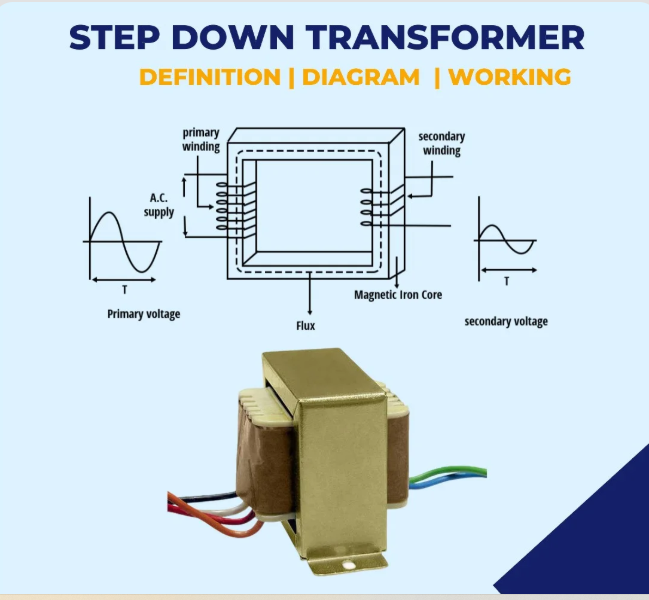
Electricity powers everything from homes to factories, but it does not always come in a form that devices can safely use. High voltage is often generated for transmission, yet most appliances and equipment require much lower levels to function properly. This is where transformers play a vital role in bridging the gap.
A step-down transformer for home and industrial use helps reduce high voltage to safer, usable levels. By doing so, it ensures both efficiency and safety in power distribution. Understanding its function and uses makes it easier to see why it is essential in modern electrical systems.
What is a Step-down Transformer?
A step-down transformer is an electrical device designed to reduce high voltage to a lower voltage. It operates on the principle of electromagnetic induction and consists of two sets of coils, referred to as the primary and secondary windings. The primary winding receives the high-voltage supply, and the secondary winding delivers the reduced-voltage output.
The number of turns in each winding determines how much the voltage is reduced. If the primary winding has more turns than the secondary, the transformer lowers the voltage. This simple but effective design makes the step-down transformer a cornerstone in electrical systems.
How Does a Step-down Transformer Work?
The working of a step-down transformer depends on Faraday's law of electromagnetic induction. When alternating current passes through the primary winding, it creates a magnetic field. This field induces a current in the secondary winding, but with fewer turns, the output voltage is reduced.
While the voltage decreases, the current in the secondary winding increases proportionally. This ensures that the overall power transferred remains nearly the same, minus minor energy losses. The efficiency of step-down transformers is generally very high, making them suitable for consistent use in different environments.
Common Uses of Step-down Transformers
Step-down transformers serve multiple roles across homes, industries, and power systems, making electricity safe and usable for different needs.
Step-down transformers are widely used in homes where a high-voltage supply needs to be reduced to levels suitable for household appliances. Devices like televisions, refrigerators, and air conditioners operate safely because of the regulated voltage supplied through transformers.
In factories and plants, large machinery often requires specific voltage levels. Step-down transformers enable the operation of heavy-duty equipment without the risk of overload. They also provide stable voltage for control systems and sensitive instruments used in manufacturing.
Electricity is transmitted across power lines at very high voltages to minimize energy loss. Before it reaches homes or businesses, step-down transformers reduce the voltage to safe levels. Without them, power distribution systems would not be practical or reliable.
Many electronic devices require much lower voltages than what the main supply offers. Step-down transformers are often built into adapters and chargers to ensure that gadgets, such as laptops and smartphones, receive the correct power supply.
Step-down transformers protect both people and equipment by lowering dangerous voltage levels. They are especially important in industries where workers regularly interact with electrical systems. Controlled voltage reduces risks of accidents, overheating, and fire hazards.
Advantages of Using Step-Down Transformers
Step-down transformers provide multiple advantages that make them essential for safe and efficient power management.
They operate with minimal energy loss, making them a cost-effective solution in both residential and industrial settings.
By reducing high voltages, step-down transformers lower the risks of electrical accidents and equipment damage.
They can be designed for small devices, such as chargers, or for large-scale industrial machinery, demonstrating their wide application range.
Step-down transformers provide consistent and stable voltage output, which is essential for uninterrupted operations.
Choose the Right Electrical Switches for Long-lasting Performance
A step-down transformer is more than just an electrical device. It is a safeguard that ensures power is delivered at the right voltage for safe, efficient, and reliable use. From household appliances to industrial machinery, its role in modern electrical systems is undeniable.
For businesses and homeowners alike, investing in high-quality equipment is crucial to achieving long-term safety and optimal performance. Partnering with a reputable brand provides access to transformers that meet stringent standards, deliver consistent results, and support the evolving needs of both homes and industries.

This post has been published by the admin of our website, responsible for content management, quality checks, and providing valuable information to our users.